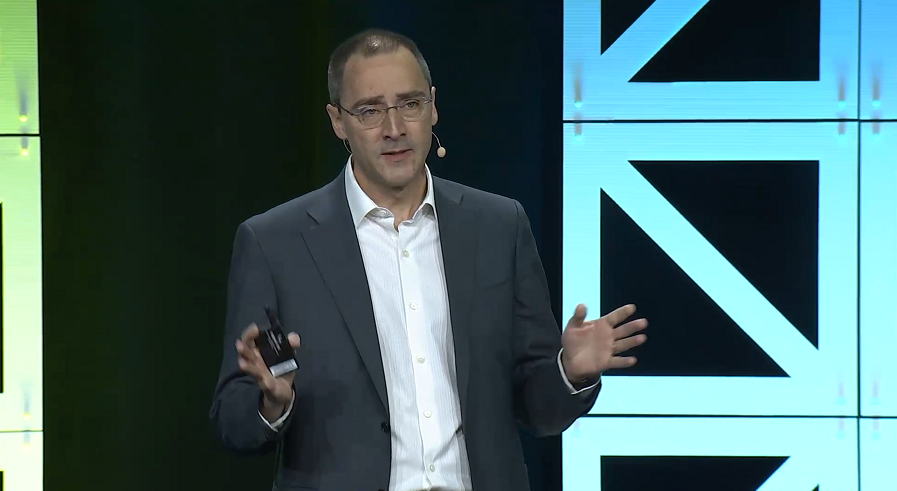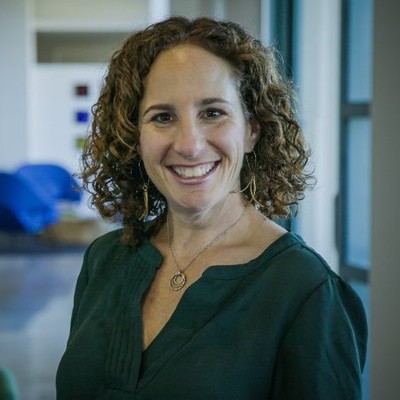He likes to debunk assumptions, not only in work but also about his background. His French accent reveals where he was born and a place he called home, but it doesn’t divulge the fact that between ages 5 and 15 he lived in four different African countries.
“I had a unique upbringing,” said Thomas Cornely, whose father worked for the International Monetary Fund (IMF). “It allowed me to adapt and find a love for exploring new countries and cultures, which continues to this day.”

Today he is the senior vice president of product management at Nutanix, a global leader in cloud software. He manages products that minimize complexity and maximize efficiency so IT teams can run apps and data from anywhere using just one platform. These products help thousands of companies modernize and build their future on hybrid multicloud IT operations.
Early Years and Education
After living in Chad, the Ivory Coast, Niger and Senegal, Cornely’s father relocated to IMF headquarters in Washington, D.C. His parents only planned to spend a year in D.C., enough time to get exposed to American culture, but they ended up staying for seven years.
Cornely considered attending university in the U.S. or Canada, but he and his parents decided he should return to his home country instead. He went to one of the toughest prep schools in Paris for two years and ultimately was accepted into a top engineering school. That’s where he met his wife, and after graduating from engineering school and working in Paris for three years, he ultimately convinced her to move to California. That was in 2001, and they haven’t looked back.
He and his wife have made their home in the San Francisco Bay Area, except for a stint in Boston, where he received his MBA from MIT Sloan, and she received hers from Harvard.
“My wife is the driven one,” Cornely said with a laugh. “She applied to Harvard, Stanford, MIT and Berkeley and got accepted to all of them except Stanford. We were living in Palo Alto at the time, so we sold everything and moved to Cambridge, Massachusetts.”
The winters proved too much for them, and they made their way back to California. After working at Symantec, Veritas, EMC and other companies, Cornely joined Nutanix in late March 2020.
Joining Nutanix
Due to the pandemic and changing work environments, companies raced to get to the cloud.
“It's actually a good thing that most companies tried to move to the cloud during Covid,” he said. “Now they have first-hand experience with what a cloud migration entails, and that allows for much more nuanced conversations.”

Given the changing economic landscape almost three years later, customers are now getting questions from their CFOs about the cost of cloud and want different options.
“They have the experience of knowing the cloud is good for some things, but maybe it’s not so great for others,” he explained. “They can see that as opposed to us telling them.”
The need for a hybrid cloud option, plus Broadcom’s intent to acquire VMware, makes Nutanix primed and ready for the future.
“We have the ingredients to be relevant for the next three, five, and 10 years,” Cornely explained.
“If you think about where we are with our Nutanix Cloud Platform, our unique ability to simply extend to public clouds with the same operating model, and our focus on cloud-native applications and data-centric services, we’ve got an amazing story.”
That story not only resonates with customers, but they see first-hand how Nutanix technology allows them to grow and scale their businesses.
Customer Delight for Hybrid Cloud
FSB, service provider and technology partner for online sports betting and iGaming based in the UK, is a case in point. The company was using Nutanix for on-prem infrastructure, and they decided to expand to Asia during COVID and wanted to do it quickly. Cornely explained that their entire stack was on virtual machines (VMs) with on-premises Nutanix clusters in the UK. The company quickly realized it couldn’t use VMs in the UK to serve its customers in Asia. In two weeks, they were able to get their entire Asia operation running using Nutanix Cloud Clusters (NC2) on AWS in Singapore.
The user interface and management are exactly the same, Cornely explained, so the company was able to close the VM and get up and running in Singapore.
“This is what we make possible,” he said.
“Did we think about that use case when we were thinking about cloud clusters? Not exactly, but it’s extremely relevant and a perfect illustration of a hybrid use case with a clear business benefit.”
Vision for the Future
Cloud-native container applications are now top of mind for Cornely and his team.
“That’s the crux of the vision when you think of the next three to five years for us,” he added.
“It’s about recognizing that the applications and the people building the applications are now driving the requirements for infrastructure. We’re clear about what we do as a company. We provide a hybrid multicloud platform to run applications and manage their data, and we make that very simple.”
Nutanix made its mark by pioneering hyperconverged infrastructure (HCI), but the company’s ability to make complex things simple and intuitive is why customers continue to buy into Nutanix technology, said Cornely. That's bigger than HCI and really is where the Nutanix Cloud Platform comes into focus and enables that platform to be deployed anywhere, from the AI-powered Edge to the data center and public clouds.
“For example, there's a lot of innovation happening at the edge, with new AI-powered container-based applications ending up running side by side with more legacy VM-based point of sale systems,” he said.
“With this innovation comes new complexity and, with that, more opportunities for our cloud platform to help customers run more efficiently, securely, and at a better scale. What excites me about the future is this is all in our hands, and the opportunities are endless.”
Cornely believes that the vision for the future of Nutanix builds on the foundation built over the last 13 years, using what Nutanix did for hyperconverged infrastructure as the blueprint for what’s next, doing for containers in any cloud what Nutanix did for virtual machines on any server.
“What’s beautiful about Nutanix is that all the pieces are there,” Thomas emphasized. “It goes back to making your life easier, making it more efficient, and giving you time back. It’s allowing you to do things that you were struggling to get done before.”
He said Nutanix had an amazing industry-defining first 10 years, followed by several challenging years of leadership change, moving to a subscription model, evolving existing products and creating new products to meet customers’ needs.
“However, the work we’ve done over the last few years has led to a differentiated hybrid multicloud vision that gives customers what they are clamoring for,” he said. “This puts us in a strong position for the next 10 years.”
Liza Meak is a contributing writer and senior manager of employee and executive communications. Find her on Twitter @lizameak and on LinkedIn.
© 2023 Nutanix, Inc. All rights reserved. For additional legal information, please go here.




